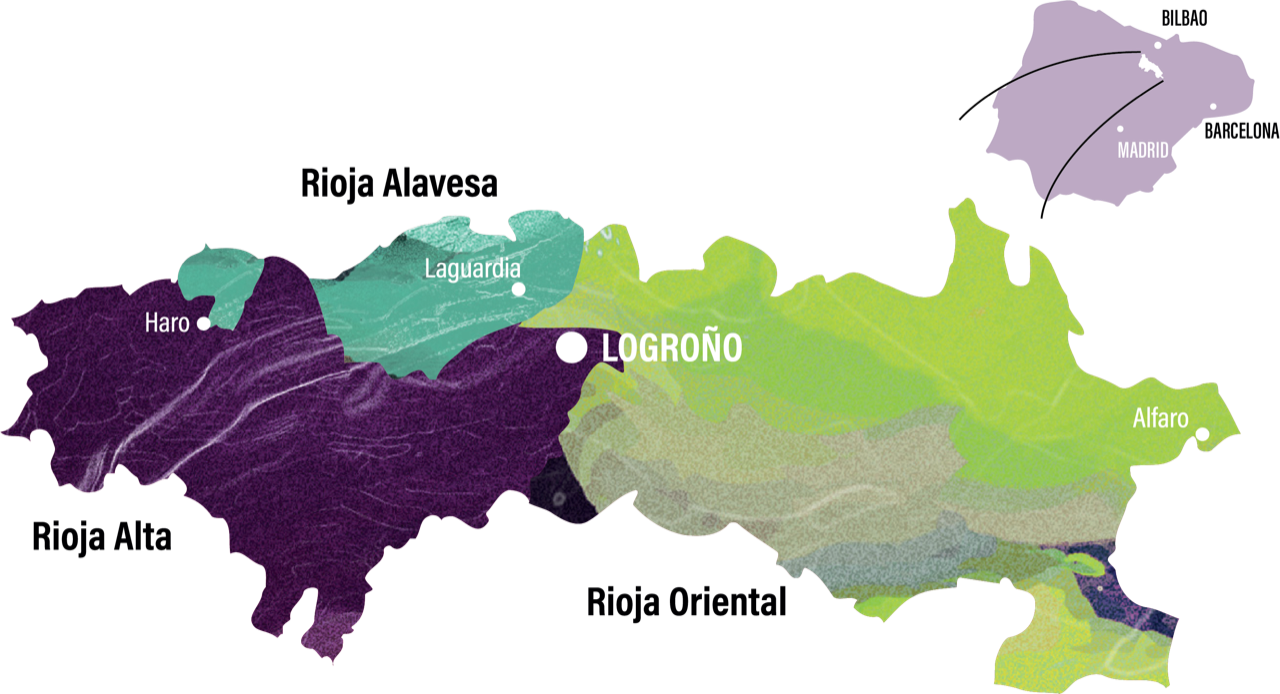Rioja, Spain’s finest
Millenia-old land, continuously producing benchmark wines
The Denominación de Origen Calificada Rioja is located in the north of Spain, on both sides of the River Ebro. Comprised of three large zones: Rioja Alta, Rioja Alavesa, and Rioja Oriental, the vineyards of Rioja stretch for more than 65,000 hectares, delivering a unique perspective, terroir, and personality.
The traditional quest for excellence of Rioja wines has built an image of prestige among consumers and made theirs the leading Spanish winemaking region, both for its classically-styled wines, with their unique suitability for ageing, admired by wine lovers around the world, and for the new generation wines with their outstandingly innovative style.
Rioja has managed to remain at the forefront of wine innovation with an ample diversity of wines with a distinct personality. This diversity is key to their success in markets, where it stands among the elite of historic European designations of origin. In fact, among quality wine regions, the Rioja brand is one of the five most widely-recognized across the world.
This is Rioja.
Learn more about the DOCa Rioja at riojawine.com

A hundred kilometres separate the westernmost town, Haro from the easternmost, Alfaro. The maximum width of the valley area where grapes are grown is about 40 km. The vineyards are planted on successive terraces and some grow as high as 700 metres above sea level. In total 144 municipalities are part of the DOCa (118 in La Rioja, 18 in Álava and 8 in Navarre) as their land is suitable for the production of grapes with the necessary quality.
The whole area benefits from the confluence of two widely opposing climates (Atlantic and Mediterranean) with an annual rainfall of a little above 400 l/m2 and mild temperatures, ideal conditions for grape growing.
Rioja soils are also highly suitable for quality viticulture, as they have a balanced structure (sand, silt and clays), are slightly alkaline, poor in organic content and have moderate water availability during the summer.
Altogether, the Wine Region has a diversity of soils (clay-limestone, clay-ferrous and alluvial) and microclimates (vineyard layout and exposure levels, protection from wind, etc.) that give the wines unique traits. This, coupled with the use of different grape varieties and growing techniques, allows for a wide range of wines which vary in personality yet remain within the framework of a perfectly recognizable common identity.
Become a certified Rioja expert!
Register and complete courses at RiojaWineAcademy.com
